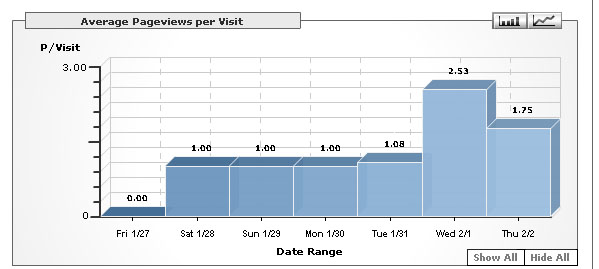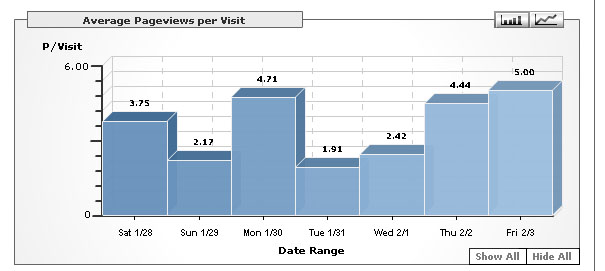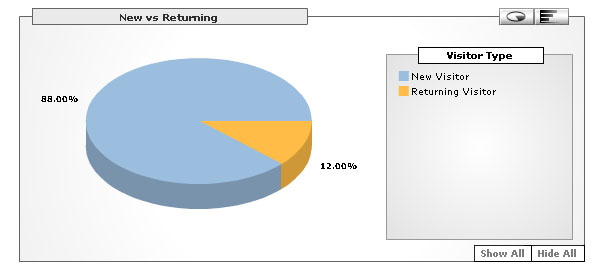.. or how to keep your visitors glued to your site
In a recent post the concept of 'stickiness' was mentioned. With this performance parameter the lasting appeal of a site is described. How much does the site makes the visitor read more than just the page it landed on.
In the post the value of Average Page views was suggested a the 'stickiness factor' Using Google Analytics one can find the value of this parameter for your site.
My 'stickiness' factor
Looking at at my blog I think the values are always between 1 and 2. Which as suggested by the articles is quite normal for blogs. A user reads maybe one or two posts and leaves. Or also probable the regular visitor uses the RSS feed to stay up to date with your ramblings.

On my web site it appears that the average user views 2, 3, 4 or even 5 pages per visit. This is an all together different type of visitor.

My 'stickiness' factor - redefined
'Stickiness' has been coined more or less as the ability of a website to keep customers at your site. Let's call this the 'stickiness in visit' factor.
I think there is another aspect that is closely related that describes the ability to get people coming back to your site: some sort of 'stickiness in time'.
In other words: How much of your visitors return for another visit? This is also easily shown in Google Analytics in the new vs returning visitors report.
The 'stickiness in time' factor
On my blog I see a returning visitors percentage of about 38%. Which I think is a reasonable figure. Readers who really want to follow what I am blogging about will also use the RSS channels and thus will not show up in these statistics. But as this is not measurable you will never know whether it's just one user (your mom) or a million visitors around the globe.

On my site the numbers are different. As one would expect. The content is not as often updated and it is an all together different purpose it serves. It is more intended as a brochure for my web design activities.
I have about 12% returning visitors. Which means that by far most visitors to my website are new. That is good as I try to reach more and more potential customers. I do not want only returning visitors (my family and neighbor's) I want new clients and more work!
Roho ProductsIf you need any website design or producing valid html+css from a design then contact me!

The optimal 'stickiness' values
Having seen the above 'stickiness' factors one can wonder what are optimal values.
'stickiness in visit'
The optimal values vary strongly per type of website.
- blogging site: for a good blogging site visitors will hopefully return to read more and each visit will probably mean one or two pageviews. You expect the average pageviews to be between 1 and 2.
- brochure-type site: on a brochure type site you want to inform the world of what you do and how good you are at it. But in the end you want people to contact you to do that thing for them. You would like them to move about your site and finally go to the contact page and act. This will mean that the average pageviews will ideally be over 3.
- e-commerce site: ideally a visitors finds what he wants to buy in just a few steps (two or three) and then the checkout process which involves another couple of steps. This brings the average pageview to starting from 4 upwards. If it is more around 2 then you will probably not be selling much and visitors are not finding the stuff they need. You either do not have it or you have hidden it carefully.
'stickiness in time'
Again the optimal values for 'stickiness in time' vary strongly per type of website.
- blogging site: for a good blogging site visitors will hopefully return to read more so you would want to aim for a big percentage of returning visitors. Values should likely be over 30%.
- brochure-type site: a brochure site is aiming at raking in new clients and returning visitors is a prime target. Returning visitors will hardly be more than 15%.
- e-commerce site: An e-commerce site wants to sell and returning customers are satisfied customers, so returning visitors to the site is again a good sign. The returning percentage may not be as high as the blogging site but should be higher than that of a brochure site.
Finally
As this is only based on my relatively low-traffic websites there is probably need for some more research. So feel free to comment on this and if everyone on the Internet thinks otherwise I might follow up ;-)




No comments:
Post a Comment
Thanks for you comment. I will probably have to moderate it, so it could take some time to see it appear on the blog, but I am usually quite fast at that.
When I feel that you are commenting just to get some link spam to your own site,you will probably never see it appear ..